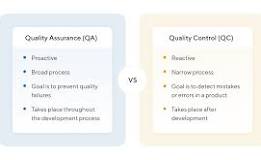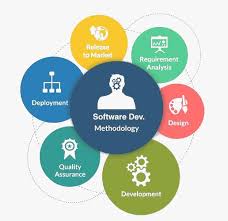The Software Development Life Cycle (SDLC)
The Software Development Life Cycle (SDLC) is a structured process that outlines the steps involved in developing software applications. It provides a framework for planning, creating, testing, and deploying software systems efficiently and effectively.
Phases of the SDLC:
- Planning: In this phase, project requirements are gathered, feasibility studies are conducted, and a project plan is created.
- Analysis: The system’s requirements are analyzed in detail to ensure that all stakeholders’ needs are understood and documented.
- Design: The software architecture is designed based on the requirements identified in the analysis phase. This phase includes creating technical specifications and user interface designs.
- Implementation: The actual coding of the software takes place in this phase. Developers write code according to the design specifications.
- Testing: The software is tested thoroughly to identify and fix any bugs or issues. Different types of testing such as unit testing, integration testing, and user acceptance testing are conducted.
- Deployment: Once the software has been tested and approved, it is deployed to the production environment for end-users to access.
- Maintenance: After deployment, the software requires ongoing maintenance to address any issues that arise, implement updates or enhancements, and ensure its continued functionality.
The SDLC helps organizations manage their software development projects effectively by providing a structured approach from inception to completion. By following a defined process with clear milestones and deliverables, teams can work collaboratively towards building high-quality software products that meet user needs and business objectives.
8 Essential Tips for Navigating the Software Development Life Cycle
- Define clear requirements before starting development.
- Break down the project into smaller tasks for better management.
- Use version control to track changes and collaborate with team members.
- Perform thorough testing at each stage to ensure quality and functionality.
- Regularly communicate with stakeholders to gather feedback and make necessary adjustments.
- Document code, processes, and decisions for future reference and maintenance.
- Plan for scalability and flexibility to accommodate future updates or changes.
- Conduct post-release reviews to analyze successes, challenges, and areas for improvement.
Define clear requirements before starting development.
To ensure a successful software development project, it is crucial to define clear requirements before starting the development process. Clear and well-defined requirements serve as the foundation for the entire Software Development Life Cycle (SDLC), guiding developers in creating a product that meets the needs and expectations of stakeholders. By establishing detailed requirements upfront, teams can minimize misunderstandings, reduce rework, and deliver a final product that aligns with the initial vision. This proactive approach not only streamlines development efforts but also enhances communication among team members and stakeholders throughout the project lifecycle.
Break down the project into smaller tasks for better management.
Breaking down the project into smaller tasks is a valuable tip in the software development life cycle as it allows for better management and organization of the overall project. By dividing the project into manageable chunks, teams can focus on specific tasks, track progress more effectively, and allocate resources efficiently. This approach also helps in identifying potential bottlenecks or challenges early on, enabling teams to address them proactively and ensure smoother project execution. Ultimately, breaking down the project into smaller tasks enhances productivity, reduces risks, and contributes to the successful completion of the software development project.
Use version control to track changes and collaborate with team members.
Utilizing version control in the software development life cycle is crucial for tracking changes and facilitating collaboration among team members. By employing version control systems such as Git, teams can maintain a history of code modifications, revert to previous versions if needed, and work concurrently on different branches of the codebase. This practice ensures transparency, accountability, and efficiency in the development process, enabling seamless collaboration and streamlined workflows for teams working on software projects.
Perform thorough testing at each stage to ensure quality and functionality.
Performing thorough testing at each stage of the software development life cycle is crucial to ensuring the quality and functionality of the software product. By conducting rigorous testing during each phase, developers can identify and address issues early on, preventing them from escalating into more significant problems later in the process. This proactive approach not only helps in delivering a high-quality product to end-users but also saves time and resources by reducing the need for extensive rework and troubleshooting down the line. Testing at every stage ensures that the software meets requirements, functions as intended, and provides a seamless user experience.
Regularly communicate with stakeholders to gather feedback and make necessary adjustments.
Regular communication with stakeholders throughout the software development life cycle is crucial for success. By actively engaging with stakeholders, gathering feedback, and making necessary adjustments based on their input, development teams can ensure that the final product meets the needs and expectations of all parties involved. This iterative process of communication and adaptation helps to align the software solution with the evolving requirements and priorities of stakeholders, ultimately leading to a more successful and user-friendly end product.
Document code, processes, and decisions for future reference and maintenance.
It is essential to document code, processes, and decisions throughout the software development life cycle to facilitate future reference and maintenance. By documenting these aspects, developers can easily understand the rationale behind certain design choices, track changes made during development, and troubleshoot issues effectively. Comprehensive documentation also ensures continuity in project maintenance, enabling new team members to onboard smoothly and existing team members to revisit past decisions with clarity. Ultimately, thorough documentation plays a crucial role in enhancing the efficiency and sustainability of software projects over time.
Plan for scalability and flexibility to accommodate future updates or changes.
When following the Software Development Life Cycle (SDLC), it is essential to plan for scalability and flexibility to accommodate future updates or changes. By considering the potential growth and evolution of the software application, developers can design a system that can easily adapt to new requirements without significant rework. Building scalability and flexibility into the initial design ensures that the software remains robust and sustainable in the face of changing needs, ultimately saving time and resources in the long run.
Conduct post-release reviews to analyze successes, challenges, and areas for improvement.
Conducting post-release reviews is a crucial practice in the software development life cycle as it allows teams to reflect on the successes, challenges, and areas for improvement after a software product has been deployed. By analyzing the outcomes of a release, teams can identify what worked well, what didn’t meet expectations, and where enhancements can be made in future development cycles. This feedback loop not only helps in celebrating achievements but also enables continuous learning and improvement, leading to more efficient and effective software development processes in the long run.




